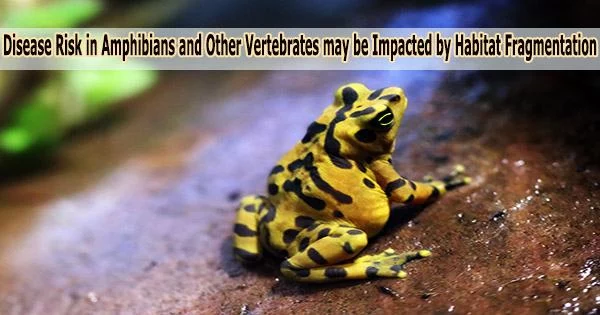When various classes of natural habitats, such as woods and water, are cut off from one another, it is known as a “habitat split,” which happens frequently in the environment. As a result, there is a disruption in the flow of creatures between both settings, which can be especially hazardous to species like amphibians that have both an aquatic and terrestrial life stage.
Leading contributors to this habitat fragmentation include human disturbances like logging of forests and agricultural expansion, which have significant effects on disease transmission in wildlife communities.
According to new research led by Penn State Associate Professor of Biology Gui Becker, published in January 2023 in Biological Reviews, habitat split has a significant impact on amphibian disease immunity, likely due to changes in the composition of the microbes living on the amphibians, disruptions to normal immune system development, and increased stress. With this knowledge, Becker’s team aims to discover new ways to help reduce disease risk.
“We propose several mechanisms by which habitat split could impact different branches of wildlife’s immune systems,” Becker said, “but also propose that targeted habitat-restoration strategies aiming to connect multiple classes of natural habitats (e.g., terrestrial-freshwater, terrestrial-marine, marine-freshwater) could enhance vertebrate immune system responses.”
Becker’s team is shining a bright light on the crucial need to holistically understand how human and climate-induced habit changes will have major ripple effects on microbial and animal diversity and health. This work is one of the major types of interdisciplinary research that many of the Center investigators are engaged in.
Seth Bordenstein
The Biological Reviews article comes on the heels of recent research published by Becker, Penn State postdoctoral scholar Daniel Medina, and a group of international collaborators in the December 2022 issue of Animal Microbiome.
In that study, Becker and colleagues examined the skin microbiomes of 90 amphibian species not under threat with those of 43 threatened amphibian species, and found that the latter had fewer kinds of microorganisms living on their skin. Earlier research by Becker shown that the innate immune system of frogs is significantly influenced by the indigenous microorganisms on their skin.
The authors draw the conclusion that because of their decreased skin microbiome diversity and potential extinction, amphibians may have worse disease defenses. Overall, our findings imply that amphibian skin microbiomes may play a significant role in the preservation of particular species.
“Together, these articles highlight potential avenues for protecting global diversity, but further research is needed to develop successful microbial management strategies from scales ranging from individual hosts to ecosystems,” the researchers said.
“We have been radio-tracking amphibians across landscapes with varying levels of habitat split, manipulating their microbiomes, looking at immune gene expression, quantifying stress hormone levels,” Becker explained, “and I think these field studies will help us dive into the mechanisms of how landscape configuration impacts host resistance to pathogens.”
When climatic, pathogen, and human stressors such pollution and habitat loss increase for wild animals, it is essential to understand the elements that lead to population resilience, said the researchers.
“Conserving and managing microbial diversity across wildlife habitats are important to environmental and ecosystem sustainability efforts as the climate changes in significant ways,” said Seth Bordenstein, director of the Penn State Microbiome Center.
“Becker’s team is shining a bright light on the crucial need to holistically understand how human and climate-induced habit changes will have major ripple effects on microbial and animal diversity and health. This work is one of the major types of interdisciplinary research that many of the Center investigators are engaged in.”
















